Affiliate links on Android Authority may earn us a commission. Learn more.
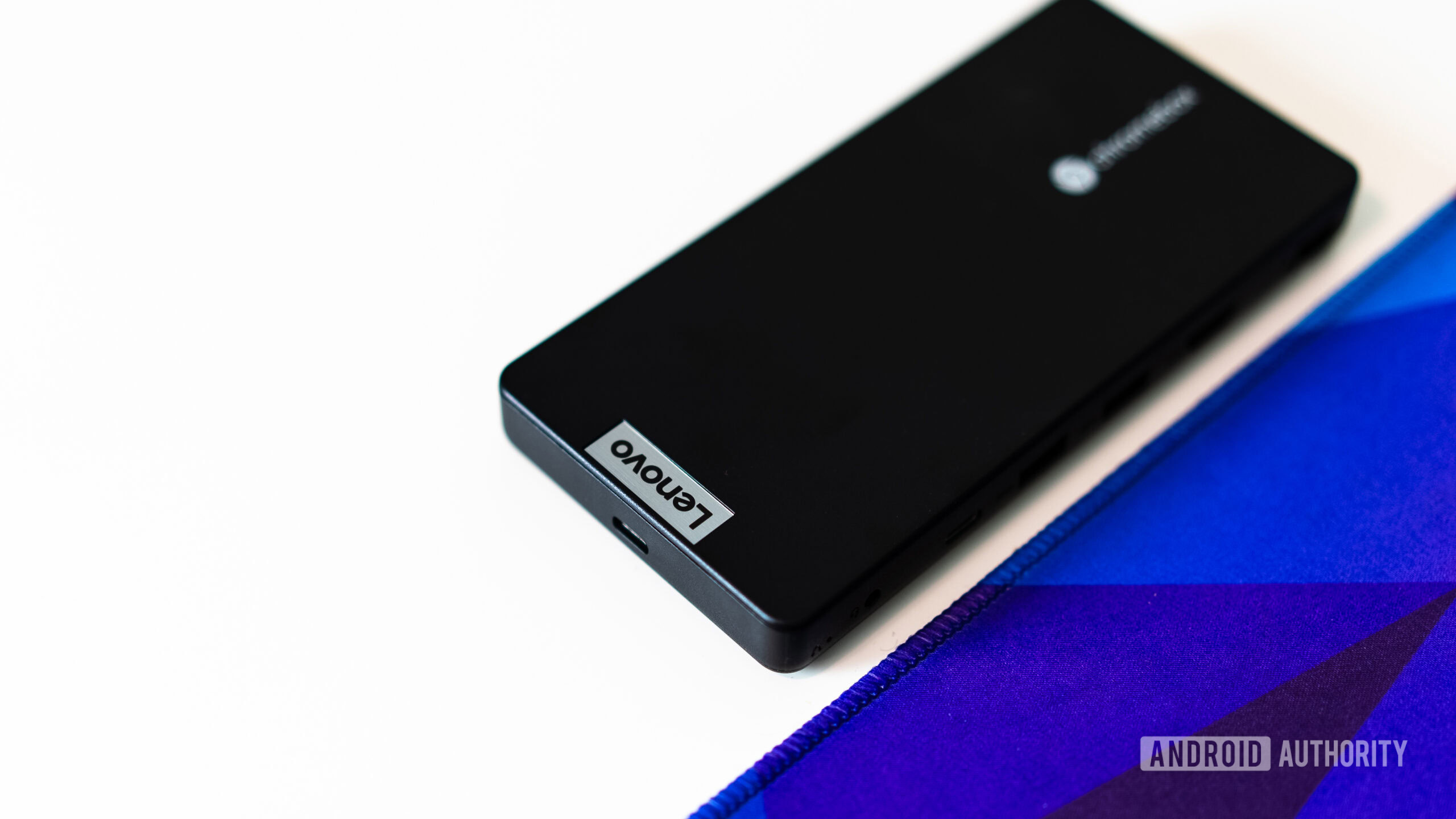


Lenovo Chromebox Micro
MSRP: $249.99
What we like
What we don't like

Lenovo Chromebox Micro
The Chromebox has never been a particularly popular branch of the Chromebook family, but that doesn’t mean it isn’t worthy of attention. Chrome OS is perfect for those who are looking for a web-first experience. It’s also an affordable way to replace an aging desktop PC. While most Chromebox devices have a similar footprint, the Lenovo Chromebook Micro takes a much different approach. The end result is the coolest Chromebox I’ve had the pleasure of using, even though it absolutely isn’t intended to be bought by someone like me. Let me explain!
What is the Lenovo Chromebox Micro?
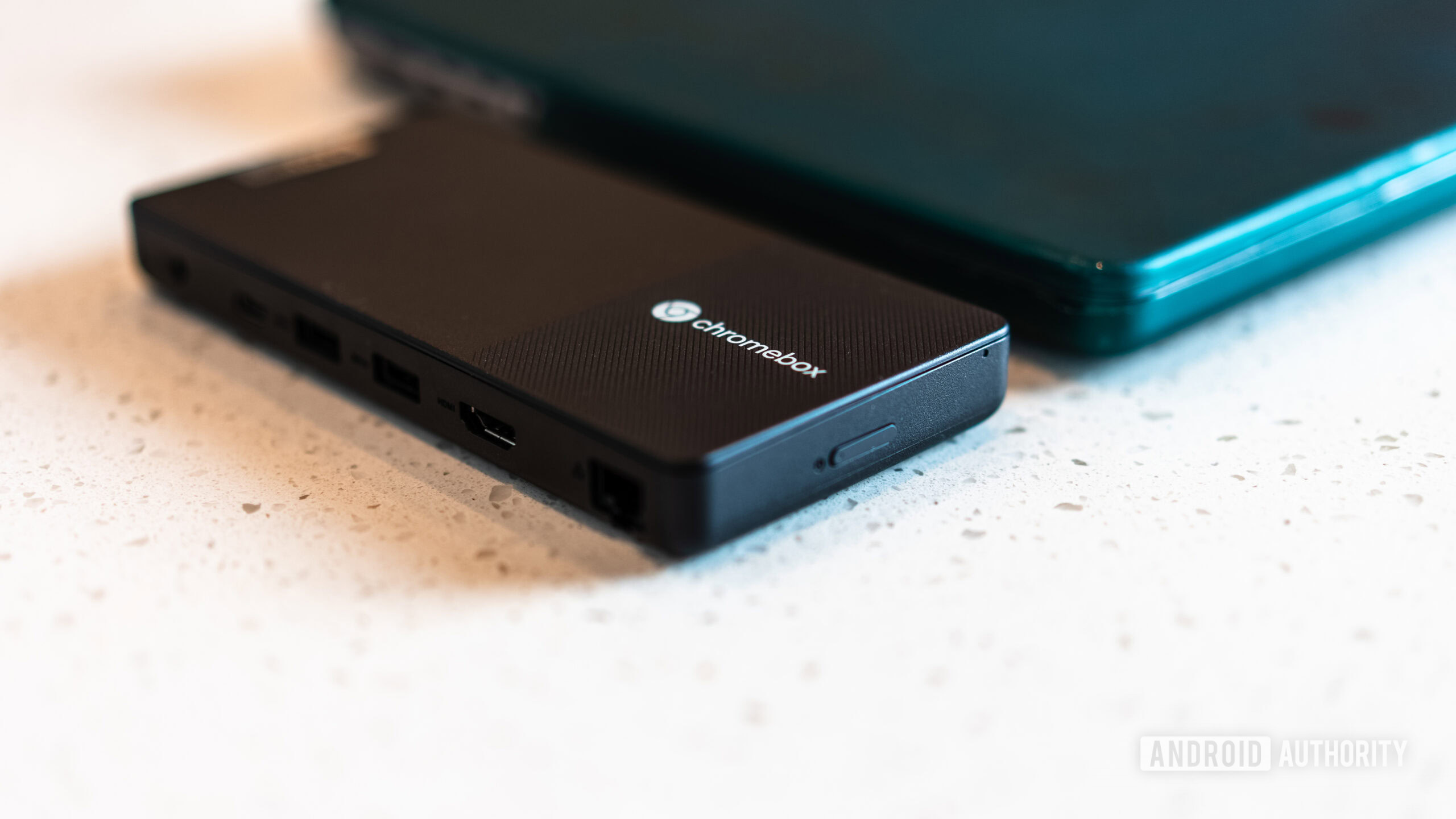
The Lenovo Chromebox Micro isn’t just a typical Chromebox; it’s marketed specifically at the signage industry. Thanks to its fanless design, it’s ultra-quiet, has an actual ethernet port for more stable connections, two USB A ports, two USB C ports (one for power), and a headphone jack, and even supports three 4K monitors. However, you’ll need to use the USB-C ports, as there’s just one HDMI port.
The Chromebox Micro is perfectly suited for kiosks and digital displays, but that doesn’t mean it’s only available for enterprise shoppers. Anyone can pick up a Chromebox Micro, but while it is important to note there are some limitations holding it back from truly shining for everyday consumers, I truly believe that the Micro is a massive step forward for the Chromebox category and could be a perfect cheap upgrade for those with aging desktops who are just looking for a machine capable of providing a good web experience.
There are a lot of unique features here that help it stand out from older stick PCs. The only catch is that Lenovo doesn’t seem interested in going after this segment, at least not in a major way and so this first outing isn’t without its flaws.
Lenovo Chromebox hardware and performance
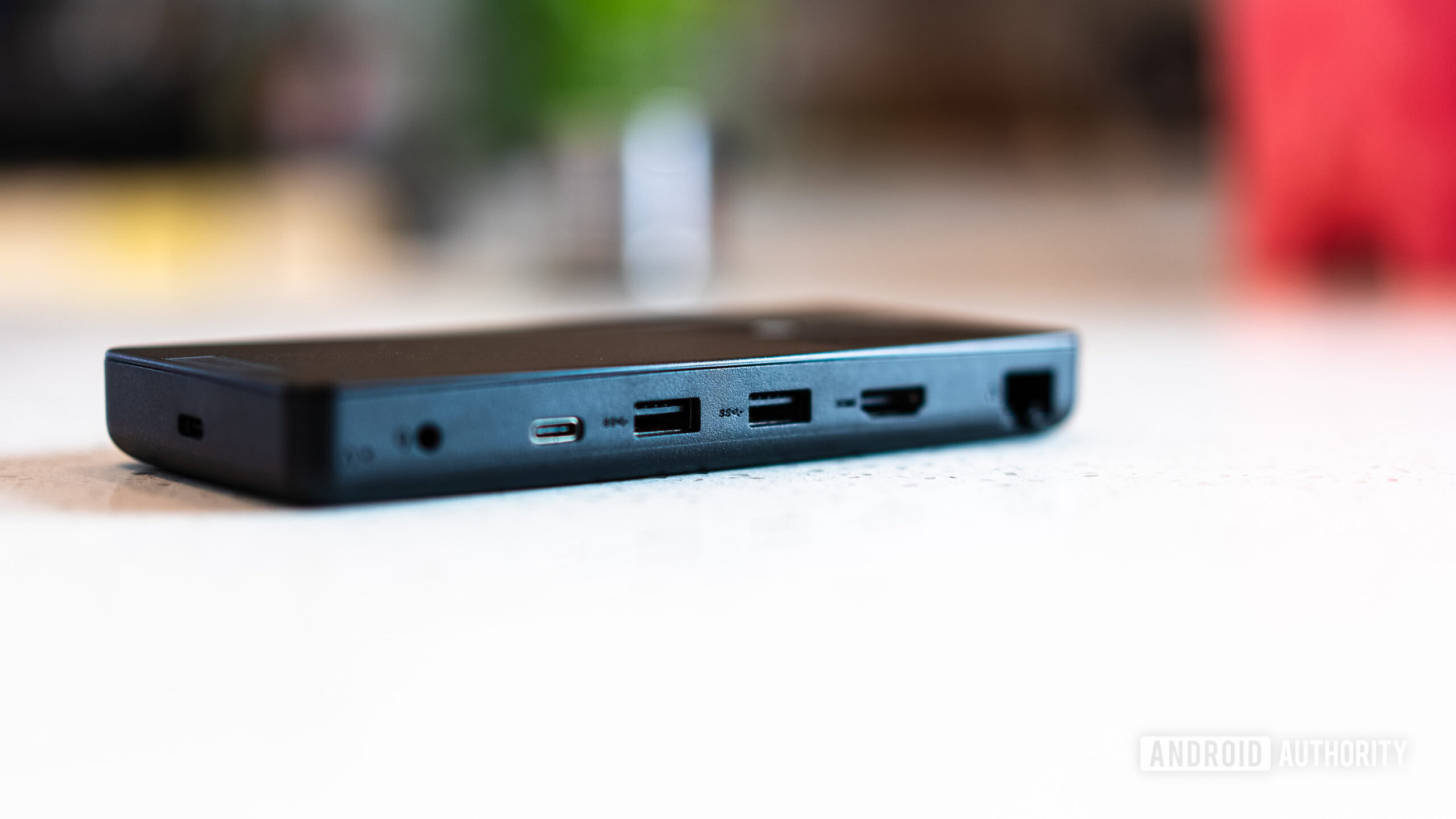
The Lenovo Chromebox Micro is the smallest Chromebox to date, though technically, the briefly-lived Chromebit was even smaller when it arrived back in 2015. The new Chromebox Micro takes everything great about a typical Chromebox and shrinks it into a package that’s about the size of an average smartphone and as thick as a typical battery bank. Speaking of battery banks, you can optionally run this thing off a power bank! This makes the Chromebox Micro a device you can throw in a bag and take just about anywhere you’ll encounter a display, including locations like hotel rooms. At $250, it’s also cheaper than most other Chromeboxes, which typically start around the $400 mark and go up from there.
I have been using the Chromebox Micro as my main machine for work and general use for nearly two weeks now, only opting for my more powerful laptop for gaming sessions. During that time I had a mostly decent experience using this as an everyday computing device, as long as I kept my expectations in check.
Starting with the positive, it supports my 32-inch 2K Samsung Odyssey G5 gaming monitor perfectly. I watched several streaming shows and a few online videos and it rendered them in 2K without any notable hiccups. As a media viewing device, the Chromebox Micro is more than up for the job. Good luck storing much locally, though. While storage space isn’t as important for Chrome OS, 32GB of EMC memory is a little on the light side when many of today’s Chromebooks include at least 128GB of flash storage.
The Chromebox Micro is held back by its less than impressive Intel Celeron N4500 SoC, though it's more than capable for certain use cases.
I can live with the storage limitations, but the real downside is the Intel Celeron N4500 processor inside. The Chromebox Micro opts for a weaker, older chip, likely as a cost-saving measure. It’s also inside of a fanless case, which limits the chip’s potential due to heat dissipation concerns. Considering the Micro’s aim is to provide a machine that’s great for handling digital signage, this makes sense, but it does limit the form factor should Lenovo or another brand want to try to market a Chromebox of this size to a wider audience.
As I found in my own use, the Celeron N4500 is more than capable of powering up the media that would be required for the digital signs it has been designed for, but it can also manage general audio and video. However, it’s clearly a machine meant for single-purpose tasks, as it struggles a bit with general performance.
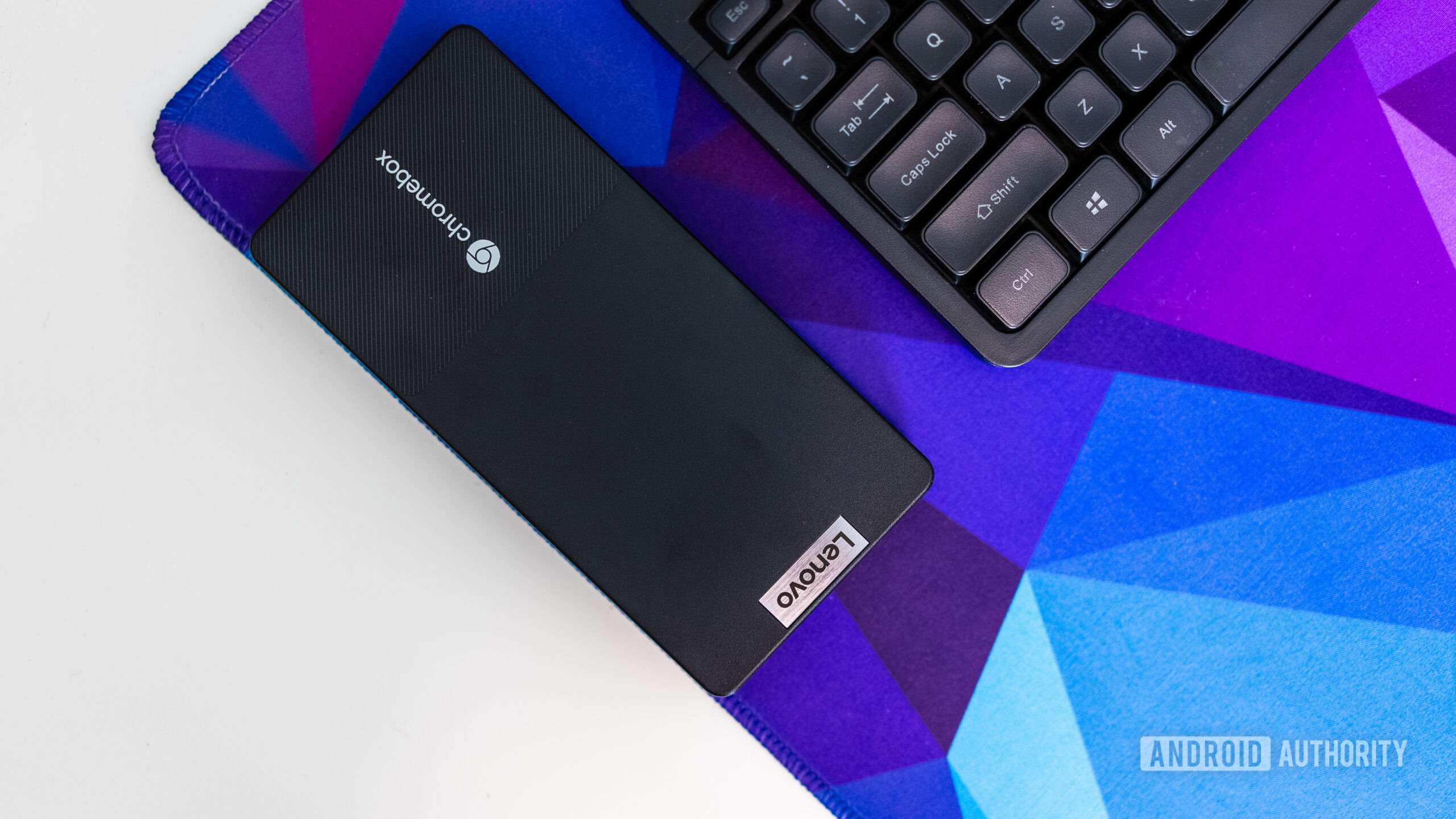
The Chrome OS UI could be a bit sluggish from time to time, even when not under a heavy load. For example, the opening animation would be noticeably slow when clicking on the app drawer and apps like Google Play would take a few seconds to load. The experience definitely felt more like an ultra-budget Chromebook from a few years ago than the more flawless performers Chromebooks have evolved into in recent years.
The good news is once everything loaded there were a few issues. Chrome ran fine, though it struggled with handling more than a handful or two worth of tabs. I was able to perform all my regular work duties with no major issues, including light photo editing using Adobe Express.
My Google Play experience was fairly mixed. Games like Call of Duty flat-out refused to load, though Minecraft and Solo Leveling: Arise ran mostly fine, with just a few major frame drops here and there. The more casual the game, the more likely it was to play nice, as the GPU onboard isn’t exactly a high performer either. I should also note that I did mess around with Xbox Game Pass and found that this experience also worked perfectly on the Micro, making it a nice little game streaming box. I’m sure it could handle some of the less demanding emulators, too.
So, who is the Chromebox Micro for?
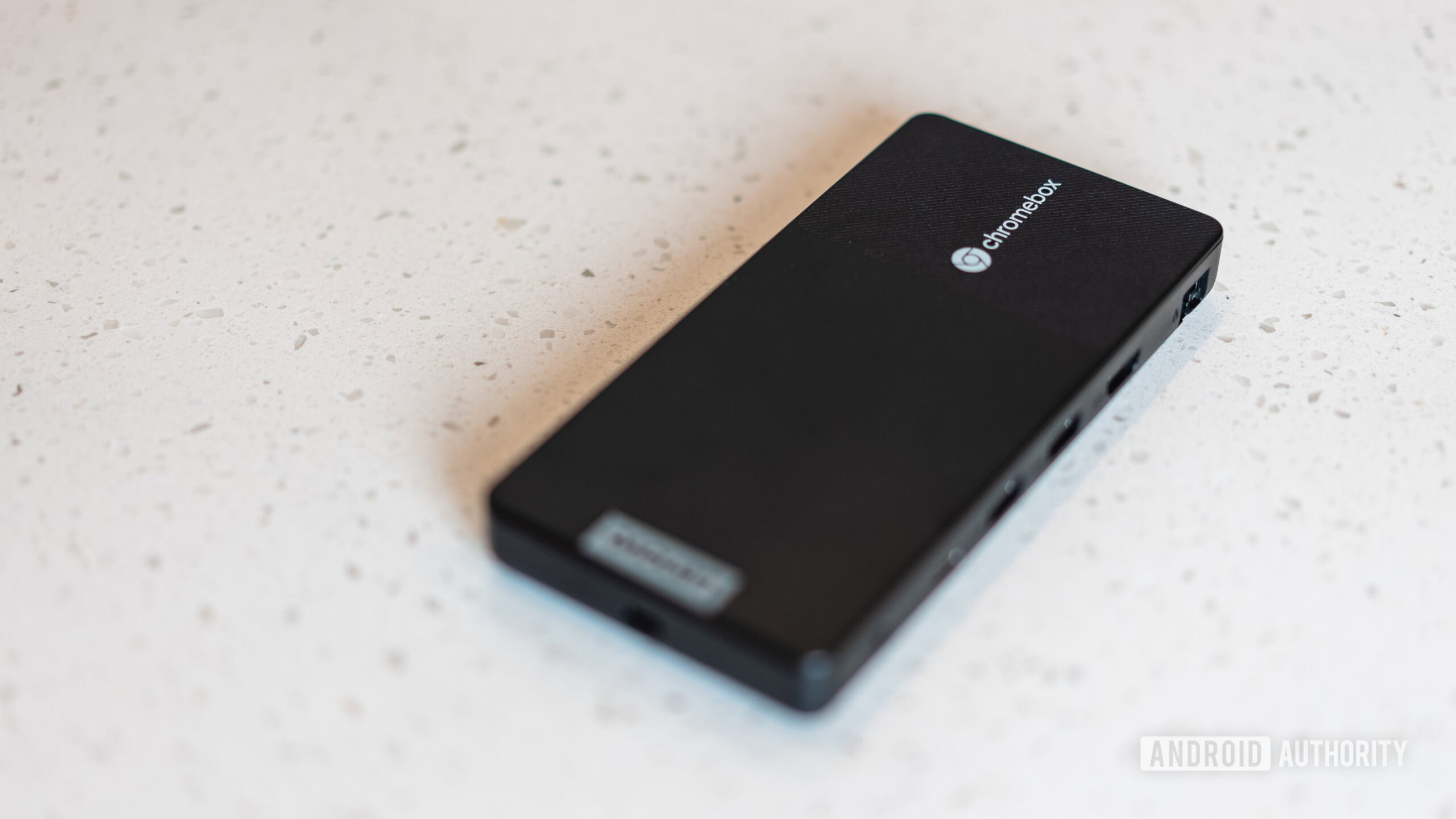
Do I recommend buying the Lenovo Chromebox Micro? It depends on what you’re looking for. In its intended use as a media player for digital displays and kiosks, the Chromebox Micro is an affordable and flexible solution that’s easy to recommend. For everyday consumers, the Lenovo Chromebox Micro is a harder sell.
While it’s more than capable of being a desktop replacement for relatively casual users, there are better options among devices targeted to a more general buyer. Most Chromebox and Chromebook competitors will typically cost more, but not necessarily by a wide margin. For example, the ASUS Chromebox 5 ($294 at Amazon) retails for around $300 but can be found on sale often for a bit less. This machine has a slightly better processor than the Micro, though it has only 4GB of RAM instead of 8GB. An alternative for those wanting more power would be the HP Chromebox G3 ($548.98 at Amazon), which has 8GB of RAM just like the Micro, and yet it also has a much better Intel i5 chipset. However, it’s also a few hundred dollars more than the Chromebook Micro.
The Chromebox Micro has a lot to offer hobbyists and DIYers, even if it was meant for the enterprise market.
Even if your budget is extremely tight, you’ll find a few other picks. I searched on Amazon and Walmart and found more than a few older Chromebooks within the same price range, and with the exact same chip to boot. Not to mention you’ll get a screen, keyboard, and trackpad as well.
Now, that’s not to say there isn’t an audience outside of the signage market for the Micro. The Lenovo Chromebook Micro has a lot to offer hobbyists and DIYers. It’s relatively affordable, has plenty of ports, and great display support, and as I mentioned before you can power it using a third-party power bank. I powered it up in my van and used it with our entertainment player and a 50,000mAh battery for a little over two hours just to test it out, and I had no problems at all.
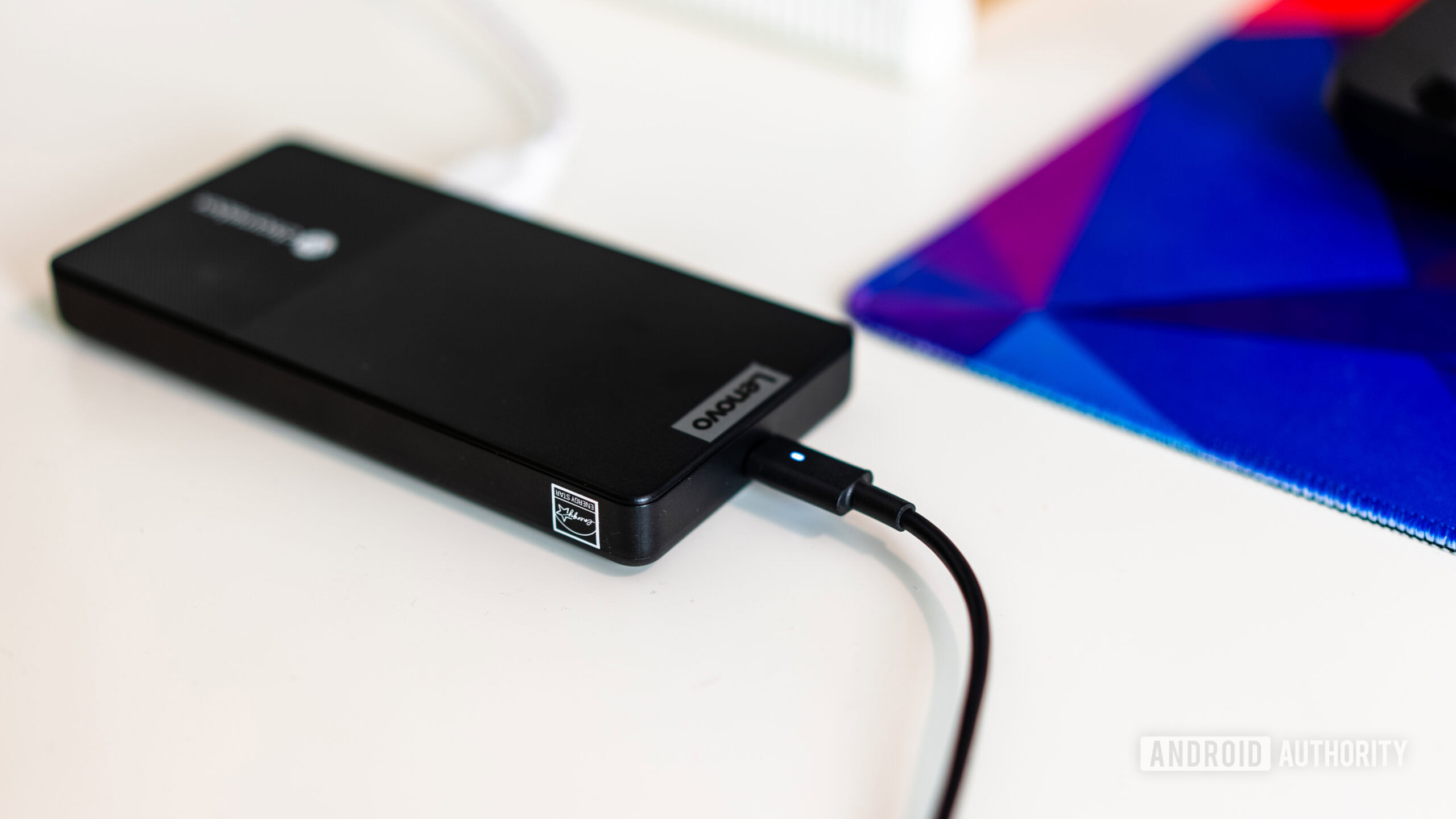
The bottom line is that the Chromebox Micro is best for creative uses like in-car use, creating a digital smart calendar or display, or as a dedicated media player for a living room or bedroom. It definitely wasn’t made for me, but regardless, I enjoyed my time with the Lenovo Chromebox Micro, and I’m hoping this isn’t the last we see of it.
Would you like to see more Chromebook Micro models, aside from Lenovo's first attempt?
In the future, I’d like to see more powerful variants that still retain a similar size and design, just with a bit more oomph. These models would not only be better suited for more advanced creative projects, but they would make for a much better desktop replacement device. Of course, this would also require a fan, which might limit just how small the device could be. Perhaps an ARM-based Chromebox Micro would be a better fit for that reason.